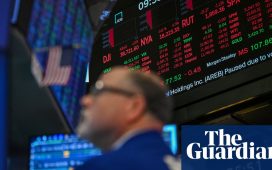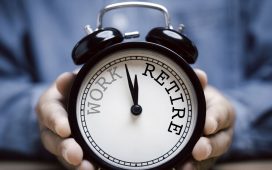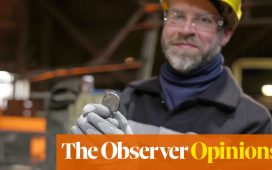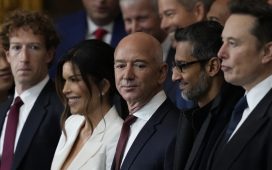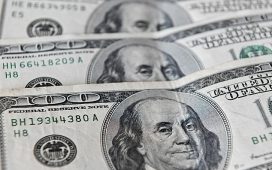Rishi Sunak on Monday set out what Tory MPs dubbed a “1992 election strategy”, as he warned voters not to risk derailing a nascent economic recovery by putting the Labour party into office.
The UK prime minister said the Conservatives, who have presided over years of political upheaval, could provide “peace of mind” for the country and insisted that voters should “stick with the plan”.
Tory MPs noted the similarity of Sunak’s message to the one deployed by former Conservative premier John Major ahead of the 1992 election. Major warned voters not to trample on economic “green shoots” by voting for Neil Kinnock’s Labour.
Economists expect inflation to continue falling towards the Bank of England’s target in 2024 and wages to rise in real terms, especially for low earners, even though they see little hope of a rebound in GDP growth.
Economists polled by Consensus Economics forecast inflation to average 3 per cent over the year and GDP to grow by a meagre 0.3 per cent.
Investors are expecting the BoE to cut interest rates this year by nearly 1.25 percentage points from 5.25 per cent.
Sunak’s hope is that by the time voters go to the polls, they will be feeling the benefits of his policies, or at least be reassured by his claim that the country is “pointing in the right direction”.
The prime minister said last week his “working assumption” was for a general election in the “second half of this year”. The Tories currently trail Labour by an average 18 points.
Major pulled off an unlikely victory, but veterans of that campaign believe Sunak will struggle to replicate that result, even if forecasts of falling interest rates, rising real wages and reduced interest rates materialise in 2024.
Lord Michael Heseltine, a cabinet minister in Major’s government, said Sunak would run out of time. “The key determinant is not that the economy is turning around, but that people are feeling better off,” he said.
“You have to have an economy that has turned around 12 months earlier and people feel their living standards improving. Only then can you say: ‘Don’t let the other side ruin it’,” Heseltine added.
At the start of an election year, Sunak invited voters to stick with his plan, rather than risk higher borrowing and taxes under Labour.
The tone is sharply different to Sunak’s claim at the Conservative annual party conference in Manchester last year, when he repudiated the “status quo” and claimed he would be “the change” candidate at the next election.
“Arguing that people want change so the answer is five more years of the Tories was never going to work for them,” said Pat McFadden, Labour’s election co-ordinator and MP for Wolverhampton South East.
“The surprise is they thought it could. They’ll go back to ‘better the devil you know’. It’s all they have left,” he added.
One minister admitted that this was now the essence of Sunak’s strategy, citing poet Hilaire Belloc’s lines: “Always keep a-hold of nurse for fear of finding something worse.”
The minister added: “It will be a reprise of 1992. We’ll argue that people may not like us very much, but they can see that the economy is turning.”

Jonathan Gullis, Tory MP and co-founder of the New Conservatives faction, said: “There’s optimism on the economy which will give us the space to make the case that we have turned a corner, so why would you risk it with Labour with their £28bn of borrowing? I think we may be heading towards a 92 election.”
Labour has come under fire from the Tories over its pledge to invest £28bn a year into its flagship green prosperity plan to boost low-carbon energy.
Economists have warned that while some voters will feel the benefits of rising wages and higher savings rates, others will be hard hit as they refinance fixed-rate mortgages, state support for energy bills comes to an end, or they feel the effect of rising unemployment and increases in stealth taxes.
Sanjay Raja, economist at Deutsche Bank, said voters could feel “slightly better” about the economy by later in the year, when it would be “on the verge of recovering gradually back to potential”, and the prospect of lower inflation and interest rates would boost sentiment.
But most economists said any improvement would be too slight to offset the long stagnation in living standards seen since the 2008 financial crisis.
“In the last 15 years, real wages have barely grown,” said John Van Reenen, professor at the London School of Economics.
Sunak’s strategy faces a number of problems that Major did not face, including the fact that Kinnock was seen by voters as a potentially more risky proposition than Sir Keir Starmer.
Lord Nick Macpherson, former permanent secretary of the Treasury, said Starmer was not going to repeat Labour’s 1992 “shadow Budget”, which proposed tax and national insurance rises on higher earners.
But he said the economic scenarios of the two years were “quite similar”, with a fragile economy showing signs of recovery before polling day, and voters being offered pre-election sweeteners in the form of tax cuts.
Norman Lamont, Major’s chancellor, introduced a 20p income tax rate on the first £2,000 of earnings in his March 1992 Budget, the day before Major called the election.
Current chancellor Jeremy Hunt announced £10bn of National Insurance cuts in his Autumn Statement and is expected to cut income tax in his March Budget, against a background of record overall postwar tax levels.

